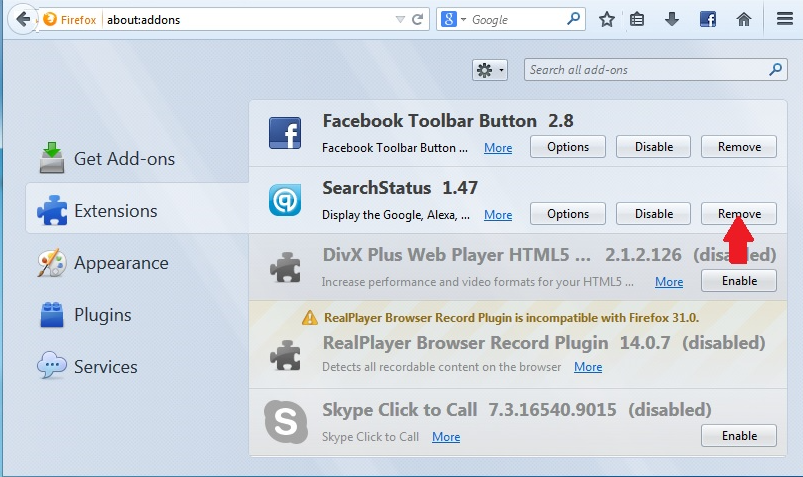What is Yahoo Search Mac
Yahoo Search Mac, in this case, refers to browser hijackers that force the Yahoo Search engine on Mac users. It should first be said that Yahoo is a safe and legitimate search engine and there is no danger in using it. However, infections like browser hijackers often misuse it. So if you are redirected to search.yahoo.com whenever you perform a search and you do not remember setting it as your default search engine, your computer is probably infected with a browser hijacker. 
Browser hijackers are quite minor infections that make unwanted changes to the browser’s settings and usually push questionable search engines onto users. The latter is not valid in this case, as Yahoo is legitimate. However, you will notice that before you are redirected to search.yahoo.com, you will be forced to briefly visit another website.
In addition to Yahoo being set as the homepage, other changes could be made to your browser, depending on which hijacker you’re dealing with. An unknown site may be set as your homepage and new tabs. You may also notice that you cannot undo these setting changes. That’s because hijackers would keep changing the settings whenever you try to undo the changes. So until you remove Yahoo Search from Mac and the hijacker that’s responsible for the changes, you are stuck with the changes. Fortunately, browser hijackers aren’t particularly dangerous infections. They mainly focus on redirects because their main purpose is to generate traffic and revenue. However, they are very annoying to deal with because of how persistent they are. They also track browsing, collect information, and share it with third parties.
So if you notice that your browser’s settings have been made without your permission and now you’re redirected to questionable websites, scan your computer with anti-virus software and get rid of the hijacker.
How do browser hijackers install?
Browser hijackers, as well as infections like adware and potentially unwanted programs (PUPs), are usually installed via free software bundling. This is a rather sneaky installation method that essentially allows these unwanted programs to install without users’ explicit permission. This is why it’s commonly used by developers of unwanted programs. The way software bundling works is quite simple, programs come attached to free software as additional offers and can install alongside automatically without requiring permission. However, the offers are optional, they just need to be deselected manually by users when they install free software. But because the offers are hidden, many simply do not notice them. And if they do not notice them, thus do not deselect them, the offers are permitted to install alongside automatically.
Preventing the installation of these unwanted offers is fortunately quite simple. When you install free programs, make sure to opt for Advanced (Custom) settings instead of Default. The installation window will recommend that you use Default settings but that is not a good idea. Those settings will allow everything that’s been added to install without you even knowing. Advanced settings, on the other hand, will display all offers clearly, and you will have the option to deselect the ones you do not want. We highly recommend deselecting all offers that come together with free software.
Software bundling is a controversial installation method for obvious reasons and programs that use it are usually detected as potential threats by anti-virus software. And keep in mind that while some of the offers may seem useful at first sight, installing them is not recommended. And it’s much simpler to uncheck a couple of boxes than it is to uninstall pesky adware or browser hijackers. We should also warn you that the majority of free programs, especially if you download them from unofficial websites, will come with added offers. And not deselecting them is a quick way to fill your computer with junk.
What does a hijacker do?
As soon as a browser hijacker installs, you will immediately know. These kinds of infections change the browser’s settings, particularly the homepage, new tab, and search engine. Yahoo Search is a common search engine misused by browser hijackers. As we already said, Yahoo Search is a completely legitimate search engine and is perfectly safe to use. However, browser hijackers force it on users, which is unacceptable. These changes usually affect all popular browsers, including Google Chrome, Mozilla Firefox, and Safari.
In most cases, when a browser hijacker misuses the Yahoo search engine, they redirect users to some questionable website first and then to Yahoo search. Because these browser hijackers change browser settings, every time you perform a search via your browser’s address bar on an infected computer, you would be redirected to some questionable website and then to Yahoo. Browser hijackers aim to redirect to sponsored websites to generate traffic and revenue. So while the end stop is search.yahoo.com, a perfectly legitimate search engine, you are forced to visit a high-risk website first. And considering that you can easily go to the Yahoo search engine directly, the browser hijacker has no actual value to you.
While browser hijackers are mostly harmless because they do not directly harm the computer, they do track browsing. In particular, a browser hijacker infection will record what you search for, sites you visit, what content you interact with, your IP address, etc. This information is usually shared with third parties for advertising purposes as well.
Yahoo Search from Mac removal
To remove Yahoo Search from Mac, we recommend using an anti-virus program. There are many anti-virus programs for Macs so you have plenty of options if one isn’t already installed. Using anti-virus to delete Yahoo Search from Mac is much easier because the program would take care of everything. However, if you can find the browser hijacker yourself, you can also uninstall Yahoo Search from Mac manually.
If you use an anti-virus program, it should undo the setting changes made by the hijacker automatically. Once the hijacker is gone, you can change your browser’s settings however you want.
Offers
Download Removal Toolto scan for Yahoo Search from MacUse our recommended removal tool to scan for Yahoo Search from Mac. Trial version of provides detection of computer threats like Yahoo Search from Mac and assists in its removal for FREE. You can delete detected registry entries, files and processes yourself or purchase a full version.
More information about SpyWarrior and Uninstall Instructions. Please review SpyWarrior EULA and Privacy Policy. SpyWarrior scanner is free. If it detects a malware, purchase its full version to remove it.

WiperSoft Review Details WiperSoft (www.wipersoft.com) is a security tool that provides real-time security from potential threats. Nowadays, many users tend to download free software from the Intern ...
Download|more


Is MacKeeper a virus? MacKeeper is not a virus, nor is it a scam. While there are various opinions about the program on the Internet, a lot of the people who so notoriously hate the program have neve ...
Download|more


While the creators of MalwareBytes anti-malware have not been in this business for long time, they make up for it with their enthusiastic approach. Statistic from such websites like CNET shows that th ...
Download|more
Quick Menu
Step 1. Uninstall Yahoo Search from Mac and related programs.
Remove Yahoo Search from Mac from Windows 8
Right-click in the lower left corner of the screen. Once Quick Access Menu shows up, select Control Panel choose Programs and Features and select to Uninstall a software.
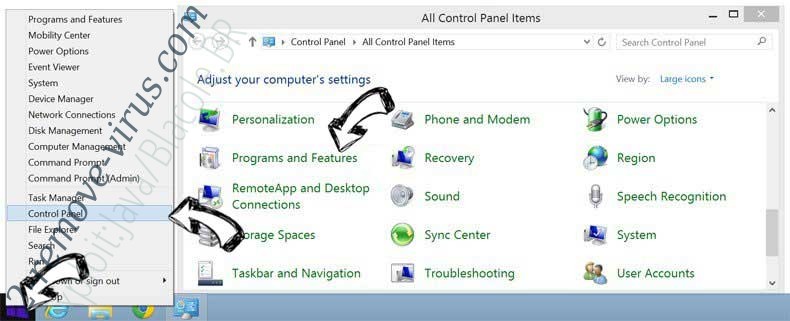

Uninstall Yahoo Search from Mac from Windows 7
Click Start → Control Panel → Programs and Features → Uninstall a program.
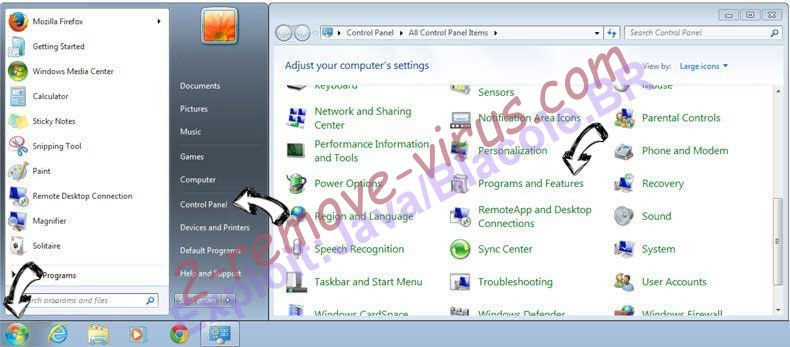

Delete Yahoo Search from Mac from Windows XP
Click Start → Settings → Control Panel. Locate and click → Add or Remove Programs.


Remove Yahoo Search from Mac from Mac OS X
Click Go button at the top left of the screen and select Applications. Select applications folder and look for Yahoo Search from Mac or any other suspicious software. Now right click on every of such entries and select Move to Trash, then right click the Trash icon and select Empty Trash.
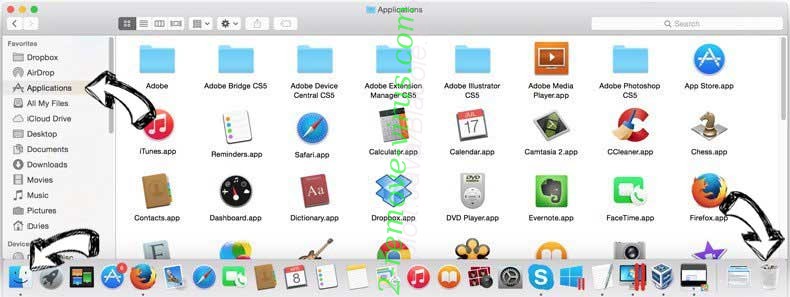

Step 2. Delete Yahoo Search from Mac from your browsers
Terminate the unwanted extensions from Internet Explorer
- Tap the Gear icon and go to Manage Add-ons.

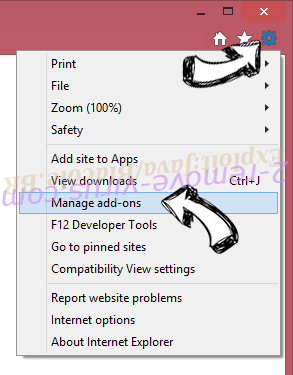
- Pick Toolbars and Extensions and eliminate all suspicious entries (other than Microsoft, Yahoo, Google, Oracle or Adobe)

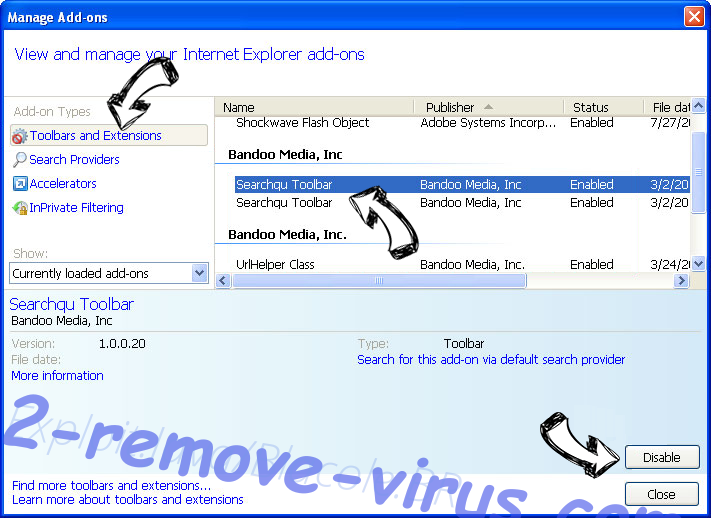
- Leave the window.
Change Internet Explorer homepage if it was changed by virus:
- Tap the gear icon (menu) on the top right corner of your browser and click Internet Options.

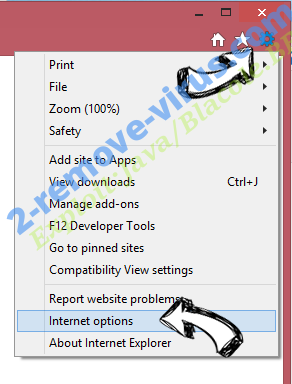
- In General Tab remove malicious URL and enter preferable domain name. Press Apply to save changes.

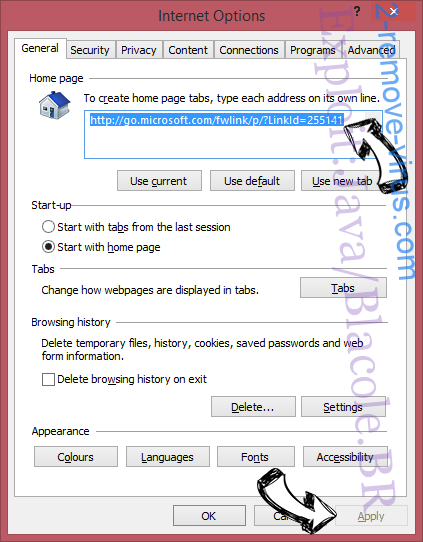
Reset your browser
- Click the Gear icon and move to Internet Options.

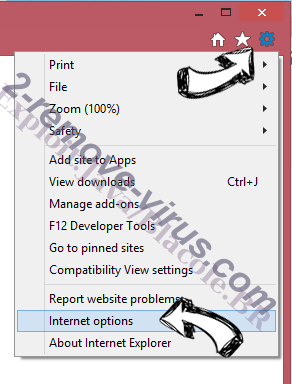
- Open the Advanced tab and press Reset.

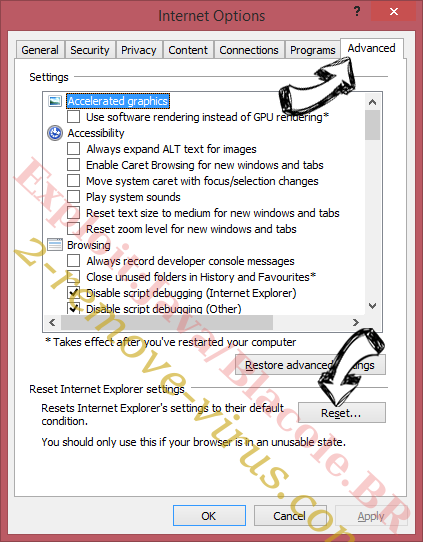
- Choose Delete personal settings and pick Reset one more time.

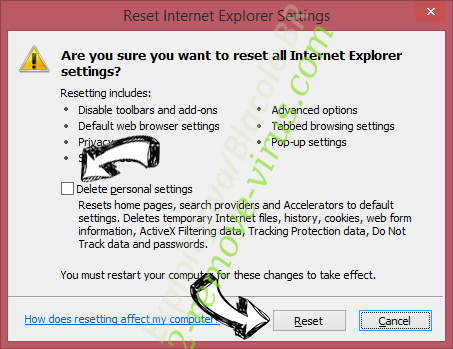
- Tap Close and leave your browser.

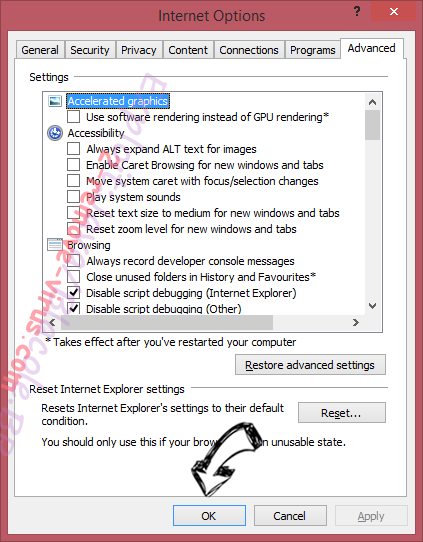
- If you were unable to reset your browsers, employ a reputable anti-malware and scan your entire computer with it.
Erase Yahoo Search from Mac from Google Chrome
- Access menu (top right corner of the window) and pick Settings.

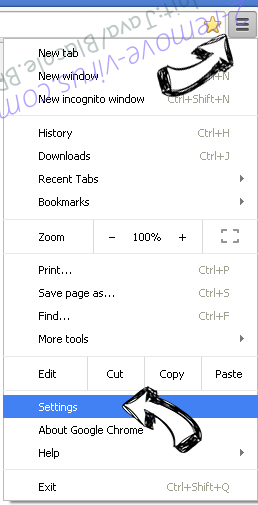
- Choose Extensions.

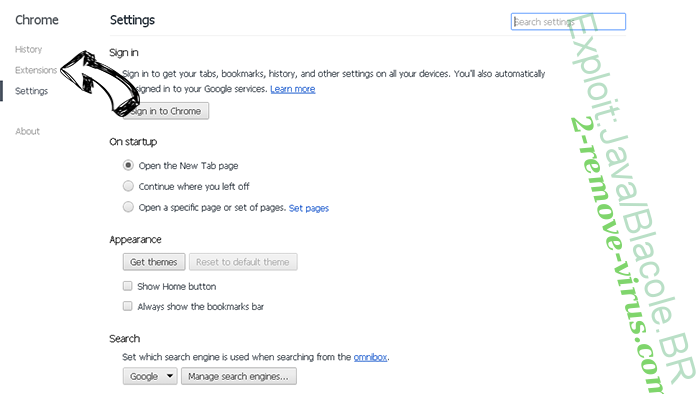
- Eliminate the suspicious extensions from the list by clicking the Trash bin next to them.

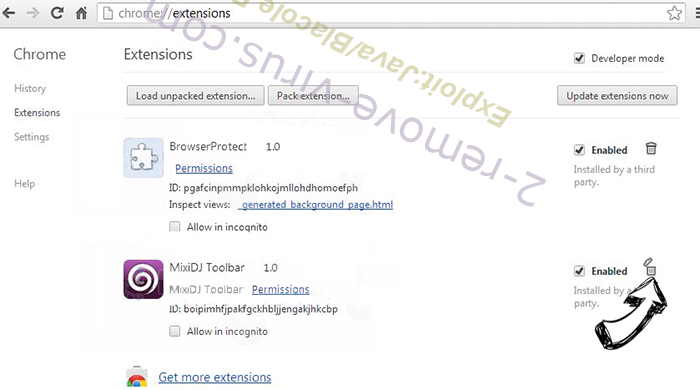
- If you are unsure which extensions to remove, you can disable them temporarily.

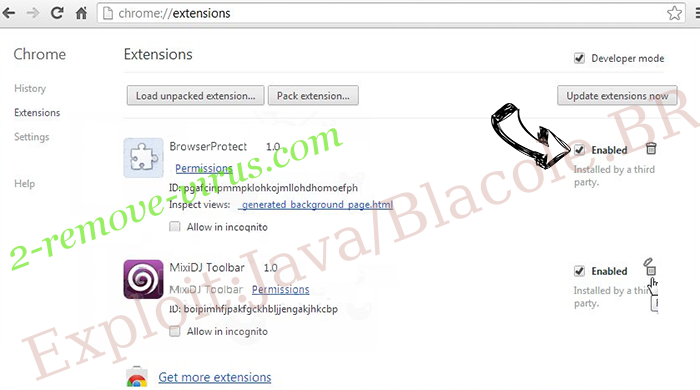
Reset Google Chrome homepage and default search engine if it was hijacker by virus
- Press on menu icon and click Settings.

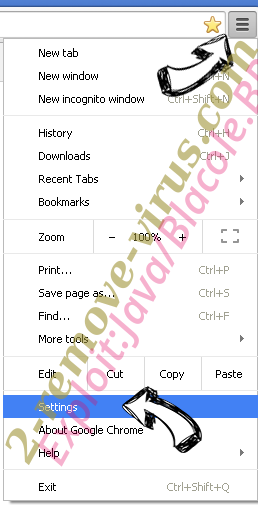
- Look for the “Open a specific page” or “Set Pages” under “On start up” option and click on Set pages.

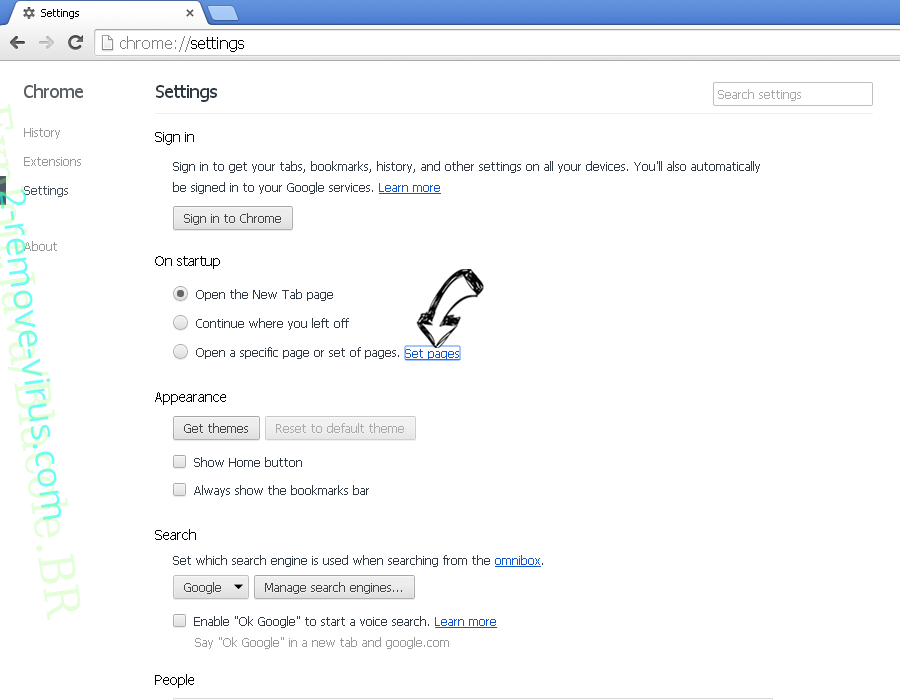
- In another window remove malicious search sites and enter the one that you want to use as your homepage.

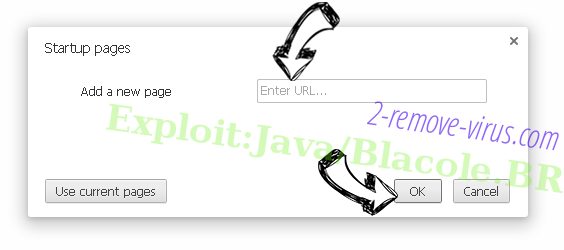
- Under the Search section choose Manage Search engines. When in Search Engines..., remove malicious search websites. You should leave only Google or your preferred search name.

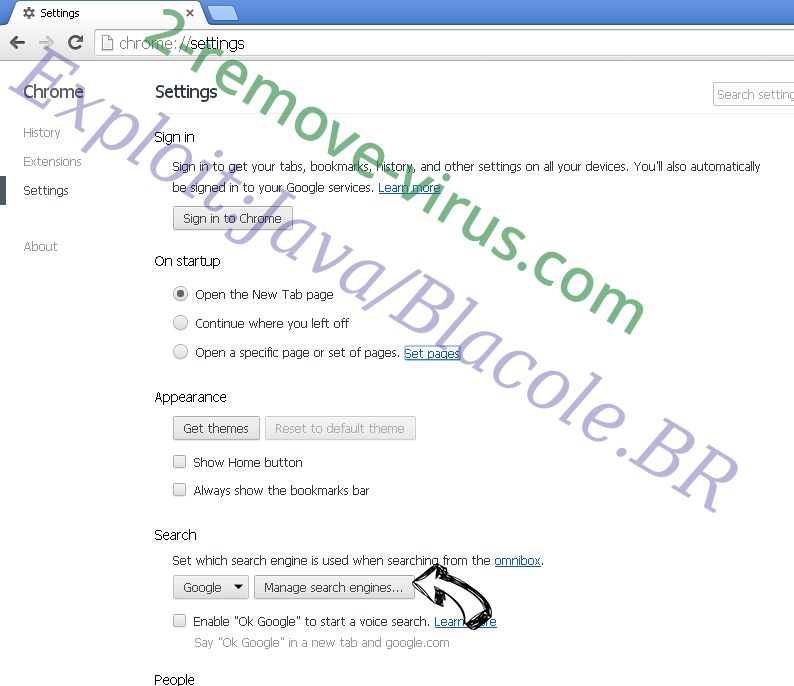

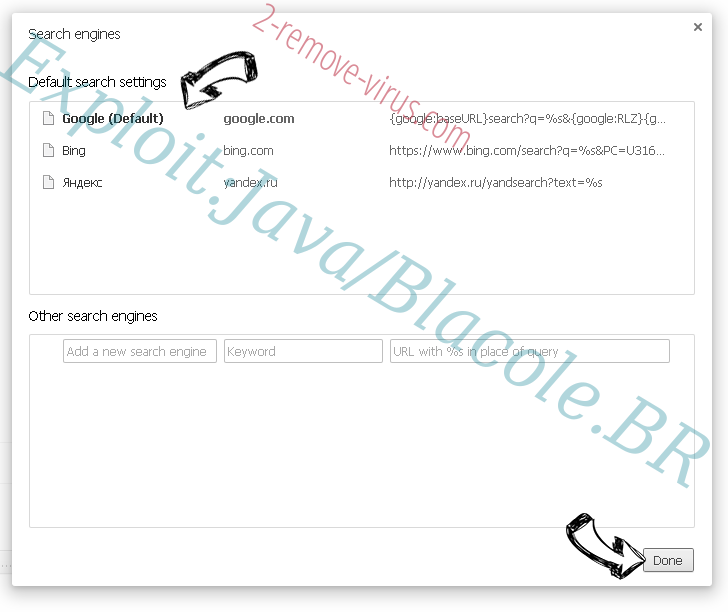
Reset your browser
- If the browser still does not work the way you prefer, you can reset its settings.
- Open menu and navigate to Settings.

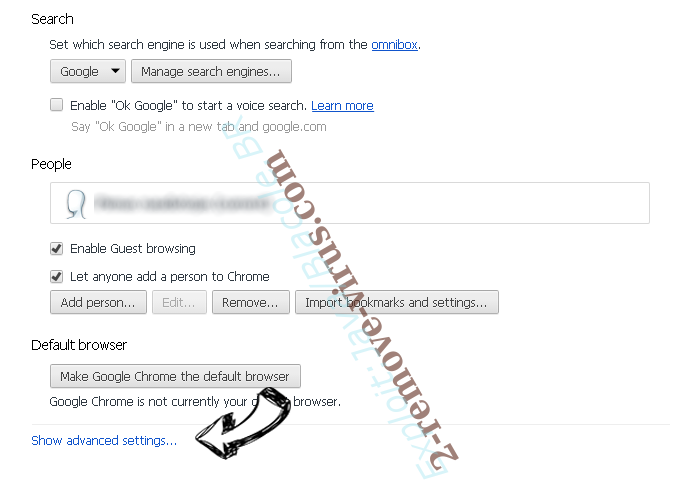
- Press Reset button at the end of the page.

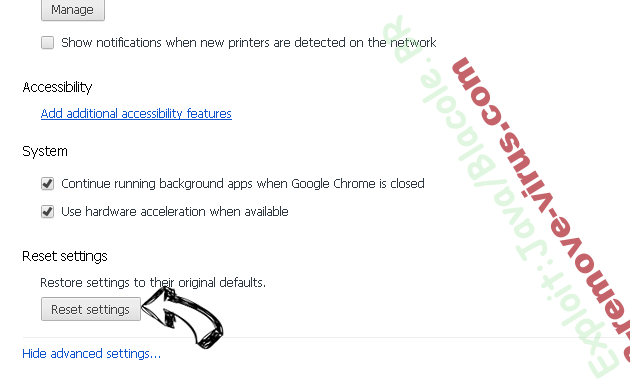
- Tap Reset button one more time in the confirmation box.

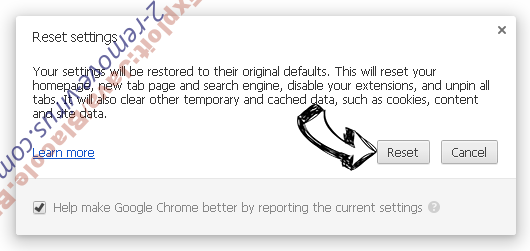
- If you cannot reset the settings, purchase a legitimate anti-malware and scan your PC.
Remove Yahoo Search from Mac from Mozilla Firefox
- In the top right corner of the screen, press menu and choose Add-ons (or tap Ctrl+Shift+A simultaneously).

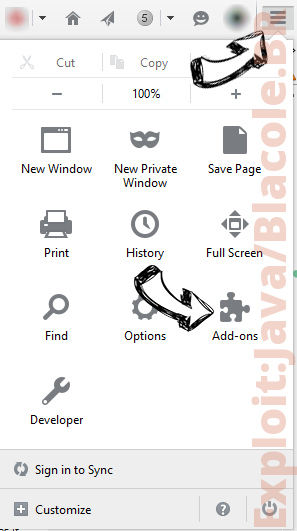
- Move to Extensions and Add-ons list and uninstall all suspicious and unknown entries.

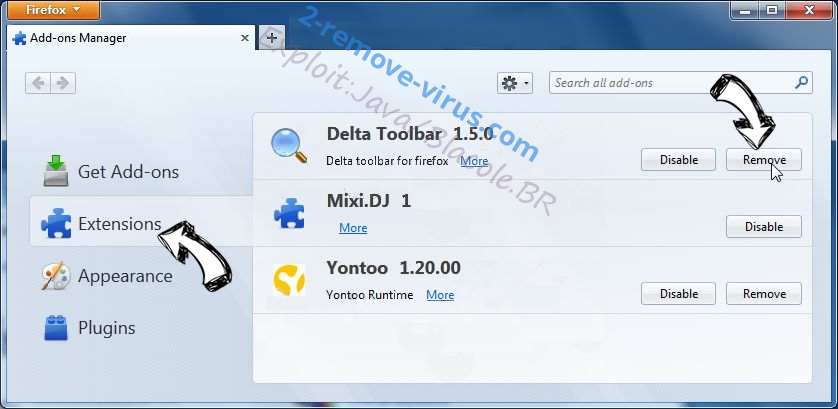
Change Mozilla Firefox homepage if it was changed by virus:
- Tap on the menu (top right corner), choose Options.

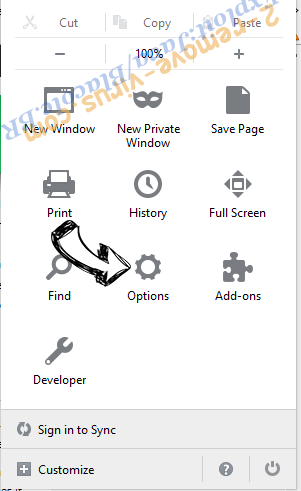
- On General tab delete malicious URL and enter preferable website or click Restore to default.

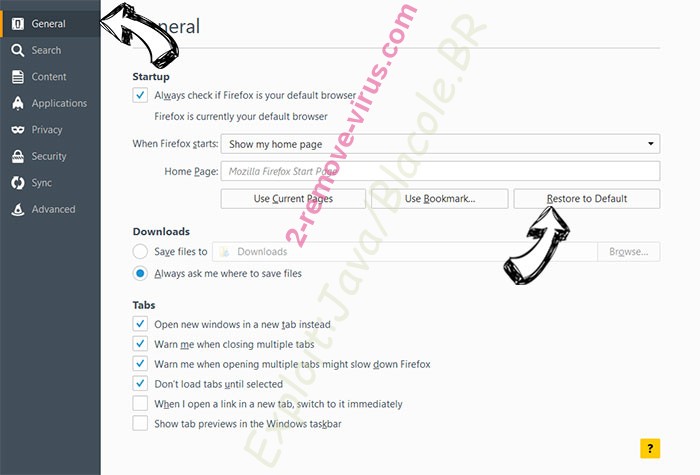
- Press OK to save these changes.
Reset your browser
- Open the menu and tap Help button.


- Select Troubleshooting Information.


- Press Refresh Firefox.

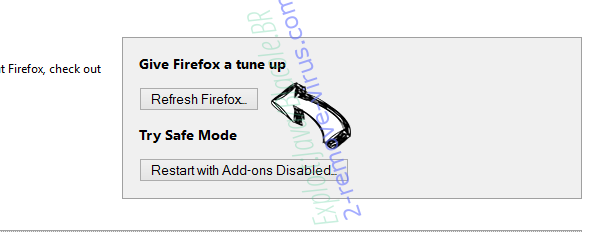
- In the confirmation box, click Refresh Firefox once more.


- If you are unable to reset Mozilla Firefox, scan your entire computer with a trustworthy anti-malware.
Uninstall Yahoo Search from Mac from Safari (Mac OS X)
- Access the menu.
- Pick Preferences.

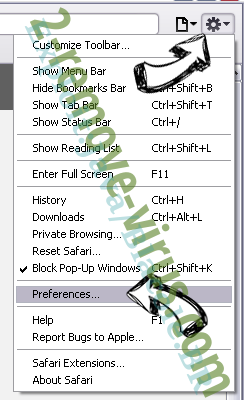
- Go to the Extensions Tab.

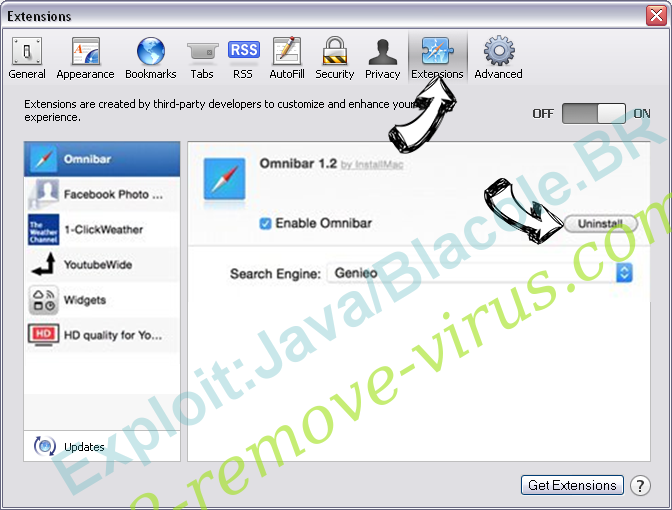
- Tap the Uninstall button next to the undesirable Yahoo Search from Mac and get rid of all the other unknown entries as well. If you are unsure whether the extension is reliable or not, simply uncheck the Enable box in order to disable it temporarily.
- Restart Safari.
Reset your browser
- Tap the menu icon and choose Reset Safari.

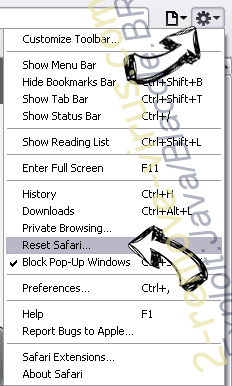
- Pick the options which you want to reset (often all of them are preselected) and press Reset.

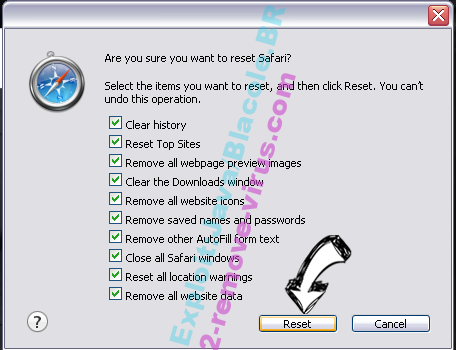
- If you cannot reset the browser, scan your whole PC with an authentic malware removal software.
Incoming search terms:
Site Disclaimer
2-remove-virus.com is not sponsored, owned, affiliated, or linked to malware developers or distributors that are referenced in this article. The article does not promote or endorse any type of malware. We aim at providing useful information that will help computer users to detect and eliminate the unwanted malicious programs from their computers. This can be done manually by following the instructions presented in the article or automatically by implementing the suggested anti-malware tools.
The article is only meant to be used for educational purposes. If you follow the instructions given in the article, you agree to be contracted by the disclaimer. We do not guarantee that the artcile will present you with a solution that removes the malign threats completely. Malware changes constantly, which is why, in some cases, it may be difficult to clean the computer fully by using only the manual removal instructions.
